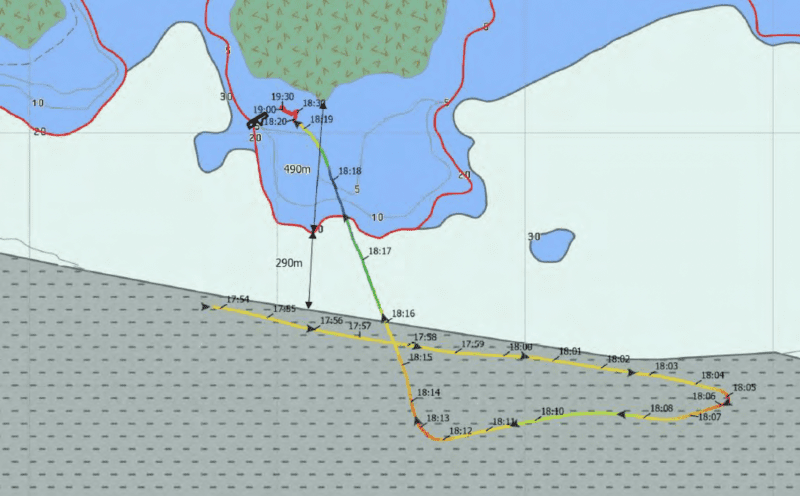The Royal New Zealand Navy Releases Final Report on Loss of HMNZS Manawanui
The Royal New Zealand Navy released its final Court of Inquiry report today detailing the circumstances that led to the loss of HMNZS Manawanui, which ran aground and subsequently sank off the coast of Samoa in October 2024.
The vessel, carrying 75 personnel, grounded while conducting a hydrographic survey of a reef on October 5, 2024, and sank the following day.
The Court of Inquiry, presided over by Commodore Melissa Ross, identified direct causes including the ship maintaining a heading toward land and confusion over the vessel’s autopilot status. Critically, the crew attempted to adjust course using azimuth thruster controls while the ship remained in autopilot mode, rendering their actions ineffective.
According to the report, the situation was compounded by a mistaken assessment of thruster control failure and subsequent non-adherence to emergency procedures, which should have included switching from autopilot to manual control.
“The Court found deficiencies in the training and qualifications of key ship’s personnel involved in the incident, risks related to the survey task were not sufficiently identified, discussed and mitigated, and instructions or procedures were lacking,” stated the report.
Notably, the investigation revealed that the ship’s Commanding Officer was not platform endorsed for the vessel, a requirement specified in the New Zealand Manual of Navigation.
Chief of the Navy Rear Admiral Garin Golding acknowledged the findings, highlighting a concerning “gap between work as imagined and work as done.”
The Navy has already implemented several corrective measures, including reviews of risk management procedures and training protocols.

The investigation identified twelve contributing factors, including training and experience deficiencies, inadequate military hydrographic planning, procedural issues, supervision gaps, and leadership concerns.
Looking forward, the Navy announced plans for a comprehensive transformation program to address systemic issues, including the lack of standardization across the fleet.
“Fundamentally we need to do things differently. We need to adapt to new technologies, change the way we approach what we do, and find new ways to continue to deliver on what is expected of us,” Rear Admiral Golding explained.
Nine recommendations were outlined in the report, focusing on risk management, procedural improvements, force generation, seaworthiness standards, training protocols, and hydrographic capabilities.
The incident stands as one of the most significant losses in recent Royal New Zealand Navy history, prompting a thorough examination of operational procedures and training standards across the fleet.
The full Court of Inquiry report can be found here.

Subscribe for Daily Maritime Insights
Sign up for gCaptain’s newsletter and never miss an update
— trusted by our 109,038 members

